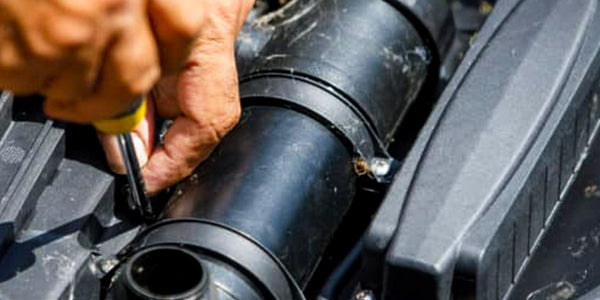Retrouvez ici les indispensables et meilleures ventes pour nos propriétaires de bassin.
Retrouvez ici les indispensables et meilleures ventes pour nos propriétaires de bassin.

A harmonious ecosystem is reflected in a healthy pond. Pond enthusiasts know this well: water quality is crucial for the well-being of fish and the prosperity of plants.
UV lamps become essential allies in this quest. They preserve the clarity and cleanliness of the water by eliminating harmful microorganisms. In doing so, they control suspended algae and keep the water in a clear and healthy state.
This article explores choosing the ideal UV lamp for your pond. Power, type, lifespan, reliability, and quality are key parameters to consider. We will examine these criteria to help you make an informed choice that is optimal for your installation.
UV lamps, essential allies for maintaining a healthy and balanced water pool, use ultraviolet light to neutralize unwanted microorganisms. They act as vigilant guardians, preserving your aquatic oasis from invisible threats.

By destroying the DNA of these microscopic intruders, UV lamps disrupt their genetic code, preventing them from reproducing. This action ensures a stable aquatic environment, preventing the proliferation of harmful microorganisms. As a result, your fish and aquatic plants thrive in clear, crystal-clear water, synonymous with health and well-being.
It is crucial to note that the distinction between traditional UV lamps and UV-C lamps lies in the wavelength of the ultraviolet light emitted and their respective effectiveness.

In the following sections, we will explore the factors to consider when choosing the right UV lamp for your aquatic environment.
When considering adding a UV light to your pond, the first important decision to make is what type of UV unit will best suit your needs. There are two main categories of UV units: sterilizers and clarifiers.

Another crucial consideration when choosing your UV lamp is the wattage of the unit. The wattage of the UV lamp should match the size of your pond to ensure optimal effectiveness.
UV lamp life is another key factor to consider. Typically, most UV lamps have a lifespan of between 6 and 12 months before needing replacement. However, some brands offer long-life UV lamps, which can reduce maintenance costs by minimizing the frequency of replacements.

The reliability and quality of the UV device you choose are therefore essential to ensure safe and effective long-term operation. Opt for a UV device manufactured by a reputable brand, known for its quality and durability. Choosing a high-quality product is an investment in the health of your aquatic ecosystem.
Identify the type of algae you are struggling with and consider how much sunlight your pond receives. Higher exposure to sunlight may require a more powerful UV lamp to effectively control algae growth.
In summary, UV lamps prove to be essential guardians to preserve the health of your pond. By destroying unwanted microorganisms, these devices ensure clear and crystal clear water, conducive to the development of your fish and aquatic plants.
Finally, let's not forget that it is crucial to understand the difference between traditional UV lamps and UV-C lamps, the latter being more powerful for water sterilization.
Aquipond Greenstab - Natural treatment against pond algae It is a natural product that helps limit algae at any time. It also has a prevent...
View full detailsReduces the layer of silt in the pond by at least 40% Easy to use with less impact on biodiversity Prevents fermentation, bad odors. pH ...
View full detailsOrganic dye to block plant growth by limiting photosynthesis ORGANIC PRODUCT NON TOXIC TO HUMANS (DIVING) AND FISH. 100% NATURAL AND BIODE...
View full detailsThe positive effects of barley straw have been known to water enthusiasts for a long time. But currently barley straw is difficult to find and i...
View full detailsReduces at least 40% of the layer of silt in the pond Easy to use with less impact on biodiversity Prevents fermentation, bad odors. ...
View full details
Leave a comment